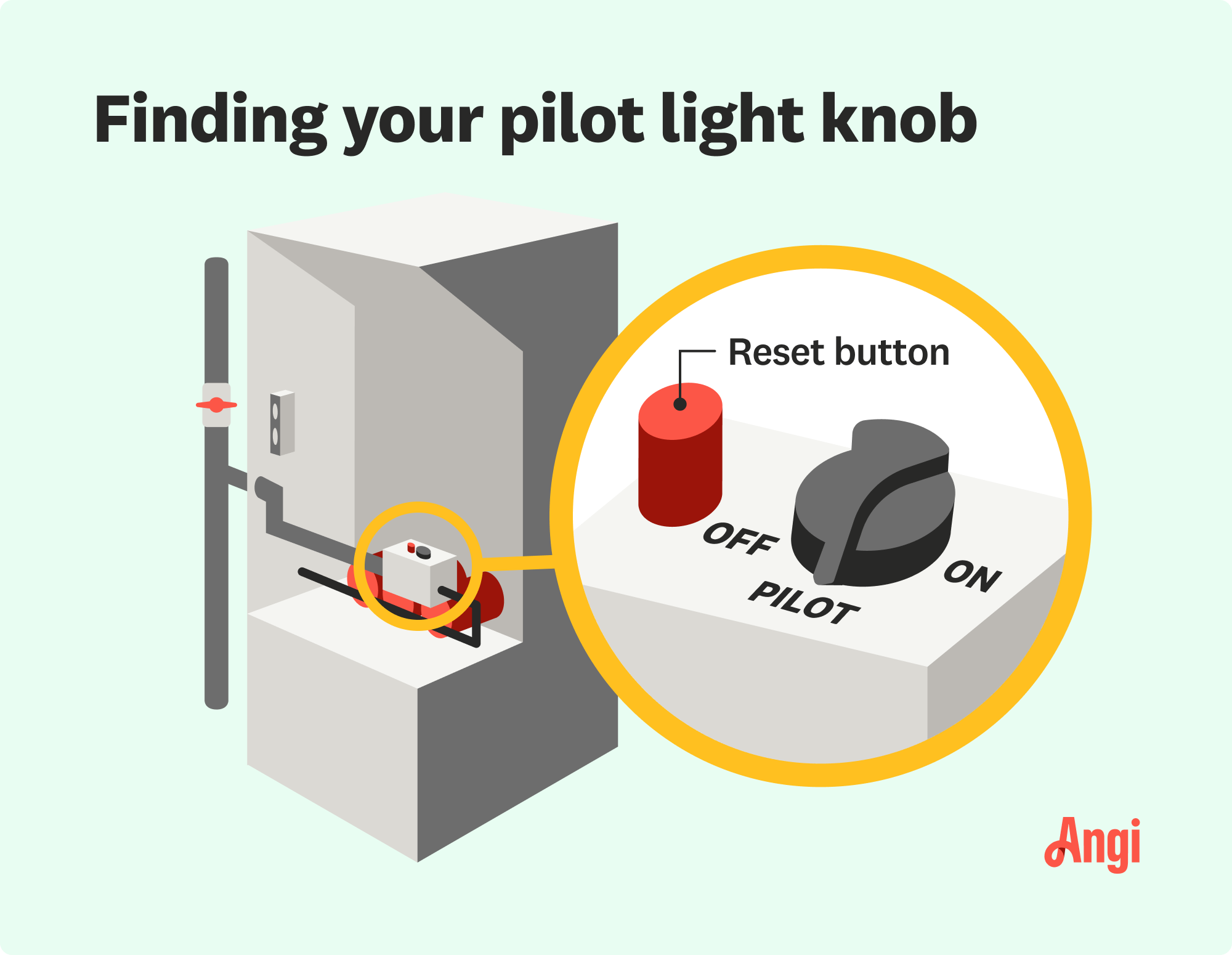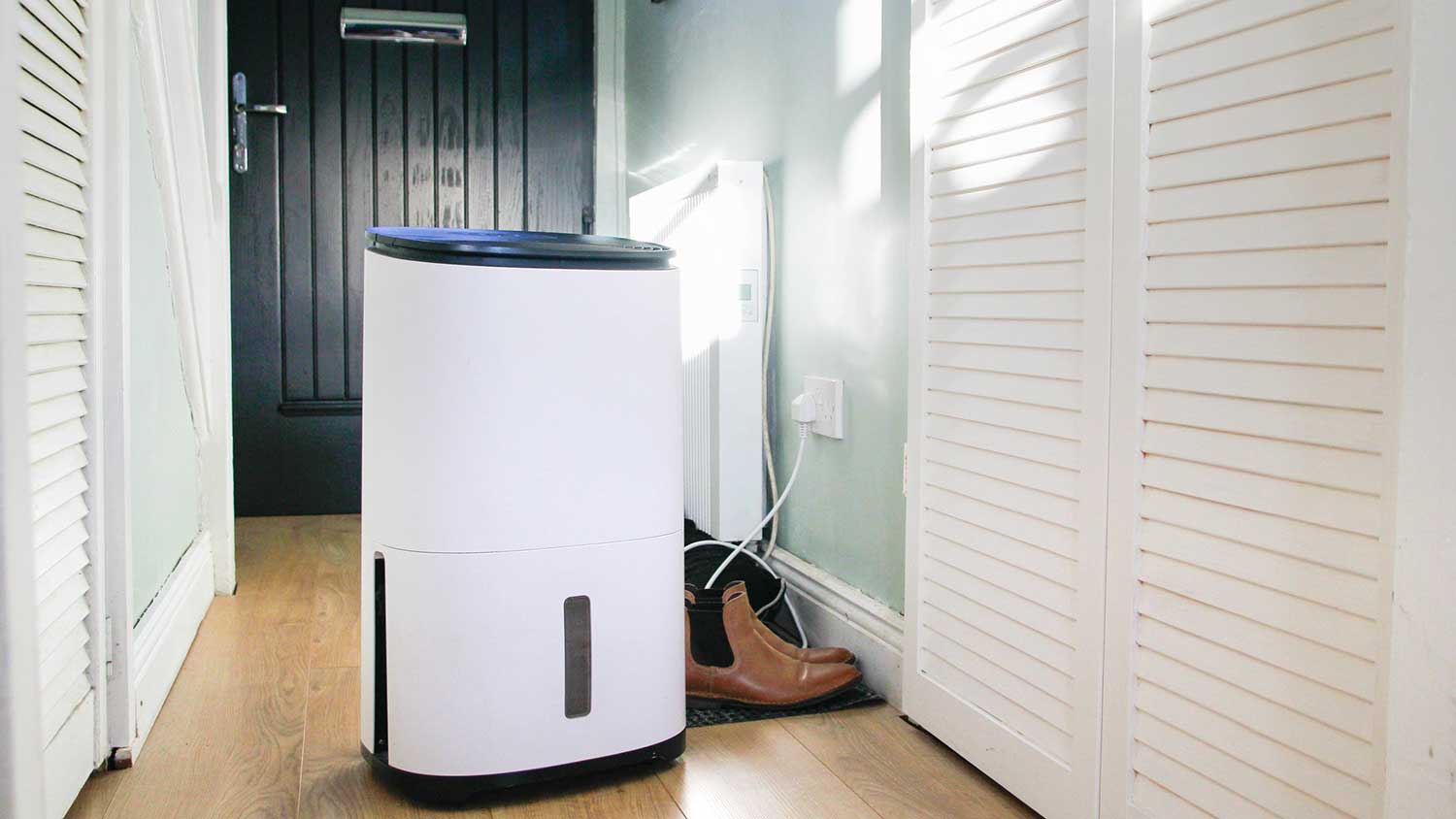How to Relight the Pilot Light on Your Furnace and Get Your Heat Back On
Follow these simple steps to get your home nice and toasty


- Long-handled lighter or match
- Flashlight
From time to time, the pilot light on your furnace might go out—whether it’s due to dirt building up inside it, damaged equipment, or wind blowing toward the flame. No matter the cause, it’s important to reignite the pilot light as soon as possible; otherwise, your furnace won’t turn on, and your house can get uncomfortably chilly. Follow these five steps to find out how to relight a pilot light on a furnace.
Review the Manual and Safety Warnings
Learning how to relight a pilot light on an old furnace isn’t particularly difficult, but there are a few things to remember before tackling this job. For one, you’ll be dealing with fire and natural gas, so it’s important to follow the safety warnings in your user manual and the instructions below. If you don’t feel confident with this type of work, you can always call a local furnace repair company for help.
If you smell gas at any point, turn off the gas valve and leave your home immediately. Once you’re outside, call your gas company or emergency services for next steps.
Before you get started, review the user manual for your furnace. It should contain important safety information about your heating unit, as well as the locations of your furnace’s key components, such as the pilot light and reset switch. On some furnaces, the pilot light is near the bottom, but this isn’t always the case, so it’s best to double-check in your manual.
If you misplaced your physical manual, it might be available online through your manufacturer’s website.
Shut Off the Gas

Find the pilot light on your furnace. Near there, you should see a knob with at least three settings: on, off, and pilot. (Yours may also include settings for “hot,” “very hot,” and “low” if it’s a newer model.) Flip it to the “off” setting to stop gas from flowing. If you have a basement or attic furnace that’s dark and hard to access, you might need to use a flashlight to help you see.
Wait a Few Minutes
After turning off your furnace, wait five to 10 minutes before moving forward. This is a critical step that helps clear out any remaining gas in the air so it doesn’t ignite when you relight the pilot.
During this time, you can look for the reset button (which is usually red and should be near the pilot light).
Light the Pilot Light
 Photo: bjphotographs / Adobe Stock
Photo: bjphotographs / Adobe StockGo back to the knob and put it on the “pilot” setting. If you have a newer furnace, you should be able to relight the pilot light just by pressing on the red reset button. After holding it down for a minute, your pilot light should stay lit. If not, it might be time to call in a pro.
Older furnaces will need to be relit manually. You can do this by pressing and holding the reset button and, at the same time, using your lighter or match to reignite the pilot light. When the pilot catches the flame and stays lit, you can release the reset button.
Turn the Furnace Back On
Once the pilot light is burning, you can set the knob to “on” to start your furnace again. Keep an eye on it for a few minutes, making sure that it stays lit. You might also want to inspect the area around your furnace and check for drafts, which could have caused your pilot light to go out in the first place.
DIY vs. Hiring a Pro
Overall, relighting a pilot light is a straightforward DIY job, but there are some safety risks involved, including the possibility of an explosion or fire. Because of that, it’s better to reach out to a professional if you aren’t comfortable working with natural gas. Also, if you follow these steps, but your pilot light won’t light or stay lit, it’s time to call in an expert.
The price of hiring a pro will vary depending on what’s wrong with your furnace. Repairs usually run between $130 and $500, although you might pay up to $1,400 for more extensive damage. If you need a replacement, a new furnace costs between $2,800 and $6,800.
Frequently Asked Questions
You can relight a pilot light by yourself, but it’s not always the safest choice to do so. While the job is straightforward, a small mistake could end in a gas leak, fire, or explosion. That’s why we recommend everyone hire a pro for this job. Local furnace pros have lit dozens if not hundreds of pilot lights, and they’re well-versed and highly experienced in the proper safety protocols to keep you, your family, and your home safe while doing so.
One of the most common signs that your pilot light has turned off is if your furnace is on but the air coming out of your vents isn’t warm. Go to your furnace and open the small front panel. If you see a small, candle-like flame, your pilot light is fine. If there’s no visible flame, then your pilot light has turned off.
You should not try to relight the pilot light yourself if you smell gas, hear hissing sounds from your gas line, or otherwise think that you might have a gas leak in your home. If you try to reignite the pilot while gas is in the air, it could start a fire or cause an explosion.
Yes, wind can turn off a pilot light, especially during major storms. If you aren’t sure why your pilot light keeps going out, it might be because drafts or breezes are getting into your home. There might also be problems with your home’s ventilation system. Either way, it’s best to work with an HVAC pro to identify and fix these issues.
Your pilot light needs to be on whenever you’re using your furnace to heat your home. However, you might decide to turn it off during the summer months, when you don’t need heating. Doing this can save you a little bit of money on utility costs—just make sure you’re fine with relighting your pilot light (or hiring a professional to do it) when fall comes around and you’re ready to get cozy.





- Furnace Repair
- Air Conditioning Repair
- HVAC Repairs
- Furnace Installation
- Wood & Pellet Stove Repair
- Dehumidifier & Humidifier Repair
- Heat Pump Companies
- Swamp Cooler Repair
- Wood Stove Services
- HVAC Companies
- Commercial A/C Repair
- Geothermal Installation
- Air Conditioning Installation
- Boiler Repair
- 24 Hour Furnace Repair
- Geothermal Repair
- Heat Pump Repair
- Humidifier Installation
- Thermostat Repair
- Thermostat Installation
- Nest Installation
- Heating & Cooling
- Heating Repair
- Furnace Cleaning
- Furnace Tune-Up
- HVAC Technicians
- Subcontractors
- Furnace Maintenance
- Plumbing & Heating Companies
- Wood Stove Inspection
- Mini Split Installation
- Wall Heater Repair
- Duct Installers










